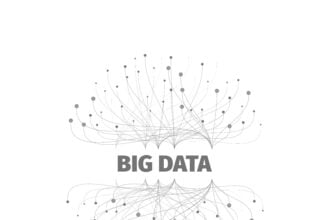Advances in mass storage and mobile computing brought about the phenomenon we now know as “big data.” These developments then ushered in solutions and tools that can process vast amounts of information — think terabytes of it or more — in real-time. That is how “big” the need for big data analytics came to be.
More specifically, big data analytics offers users the ability to generate relevant insights from heaps of data. InfoSec specialists, in particular, find big data analytics very helpful in analyzing online threats. But before we dive into its relevance for cybersecurity, let’s clarify how big data analytics works in a nutshell.
Understanding Big Data Analytics
Big data analytics is the process of evaluating large chunks of information at once. Said information can be a combination of semi-structured and unstructured data sets — coming from web server logs, social media, network traffic logs, etc.
The goal of big data analytics in cybersecurity is to uncover crucial details that can help companies make informed decisions. With such knowledge, cybersecurity teams can improve their network security and stay on top of emerging threats, thus preventing data breaches.
Is Big Data Analytics a Silver Bullet?
Big data analytics provides security analysts with the information they need to detect, observe, and examine concerns within their network more efficiently. This ability makes the process more proactive when it comes to warding off current and potential cyber threats.
With the right approach, relevant security information from big data can significantly reduce the time it takes for analysts to identify and resolve issues. As a result, specialists can even predict and prevent potential intrusions.
With that purpose in mind, is it enough to analyze the data from an organization’s network? Or is there a way to enhance big data analytics further?
Organizations need to have access to as much relevant information as possible to get the most out of big data. Additional sources can help analysts do much-needed comparisons and verification to determine priorities and protect IT systems against threats.
Since most cyberattacks involve the use of websites and IP addresses, enterprise data feed packages can improve an organization’s big data analytics capabilities.
How Can Domain Data Enhance Big Data Analytics?
Analysts can use historical domain data to identify websites that have had ties to attacks in the past. They can gather relevant details about a domain’s history and combine this with big data analytics tools. Doing so can provide cybersecurity experts with the information they need to obtain clues and even create threat profiles of the attackers.
Domain data from trusted WHOIS and IP geolocation databases can also contribute to pinpointing an attacker’s location. Details like the country and registrar associated with a domain may give hints on where an attack is coming from.
Another instance where big data on domains can be useful is in deploying an intrusion detection system (IDS). IDS experts may employ a large-scale WHOIS data repository that supplies them with real-time domain information to identify potential attack vectors. With the help of existing threat data and domain reports, teams can quickly spot suspicious network activities before these can result in attacks.
These are only a few examples of how domain data can improve big data analytics in cybersecurity.
Big data analytics in cybersecurity works best when companies have access to as much available information as possible. Only with comprehensive intelligence on IP addresses, domain names, and other relevant threat investigation sources can organizations enhance their network security to stay safe against even unknown cyberattacks.
When choosing the right data sources, consider one that doesn’t require manipulation to fit the requirements of already-existing systems. A WHOIS data provider like whoisxmlapi.com can help organizations reinforce their defenses against ever-evolving cyber threats.










